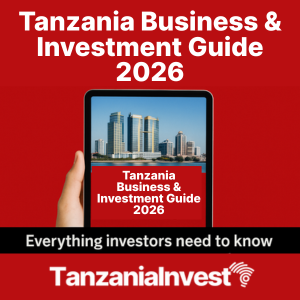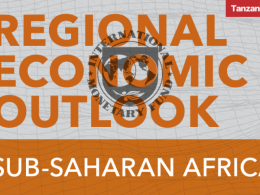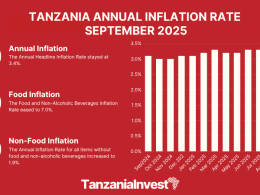The World Bank’s (WB) recently published its latest Tanzania Economic Update, indicating that the country was again one of the top growth performers in the region.
The independent view of the WB suggests slightly improved economic activity in 2019 but at a lower rate of growth, 5.6%, up from our 5.4% for 2018.
Inflation has been low and stable and the balance of payments is quite sound despite a widening current account deficit.
Exports are recovering from last year’s contraction. As of September 2019, gold exports, which account for 40% of nontraditional exports, were up 26% because of both higher volumes and higher prices, and exports of manufactured goods had risen by 33%.
Thanks to more arrivals, earnings from tourism also rose by 9%.
However, fiscal management needs to be strengthened, especially given the intensification of spending pressures in advance of elections.
Revenue forecasting is weak, undermining budget credibility and resulting in the accumulation of arrears and commercial domestic debt.
Moreover, spending pressures are rising as general elections near (October 2020). In combination with underperforming domestic revenue and the pressure of public investment in large infrastructure projects, the fiscal deficit has widened from 1.9% of GDP in 2017/18 to 3.2% in 2018/19.
Spending pressures are likely to continue, and fiscal management must be firm to ensure that priority services, especially education and health, are adequately funded the WB stresses.
The ambitious revenue target of 17.1% of GDP (in the previous fiscal year 14.0% was actually collected) and the higher budgeted spending may make it difficult to achieve the fiscal deficit goal of 2.3% of GDP in 2019/20.
All in all, economic growth prospects remain positive but sustainability is a concern unless private investment takes a larger role.
To this regard, progress in reforming Tanzania’s business environment has been slow. According to the World Bank Doing Business Report 2020, Tanzania ranks 141 out of 190 economies in the ease of doing business, trailing Rwanda, Kenya, and Uganda and Sub-Saharan peers like Zambia, Malawi, and Mozambique.
Despite an apparent government turn-around in its work of amending the Statistics Act, opening consultations for drafting the Business Facilitation and Investment bill, and passing the Finance Act 2019, the private sector still finds the business environment unpredictable and calls for faster reforms, particularly in terms of business regulation.
In consideration of the above, the WB expects real GDP growth for Tanzania of about 6% over the medium term, but that will depend on the speed of reforms to improve fiscal management and the business environment for private investment and growth.










